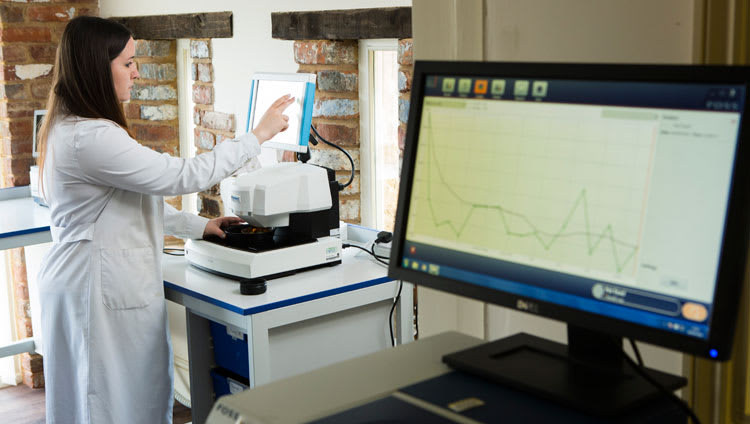Explore the benefits of measuring reactive lysine with NIR
Published Tuesday, 25th April 2017
Near infrared (NIR) spectroscopy has been used in traditional proximate analysis for some time to measure components such as fibre, protein and moisture. Recently this list has been extended to include reactive lysine.
The use of NIR beyond traditional proximate analysis looks set to benefit the industry as a whole, providing valuable insights for those involved in feed milling and quality control, as well as the wider nutrition and animal production industries.
Any deviation from target feed formulation specification translates directly into economic losses, through higher feed costs or lower animal performance. At a time when feed production makes up 70% of variable animal production costs, utilising NIR to measure reactive lysine has real potential to better support supplier selection, optimise rations and improve feed efficiency.
Reactive lysine is the portion of lysine that is chemically intact following heat treatment and standardised ileal digestible (SID) reactive lysine is a measure of the lysine that will be bioavailable to the animal. Both are vulnerable to heat processing.
Measuring heat damage with NIR
Heat damage of proteins can affect the precision and cost effectiveness of feed formulation. NIR can be used to measure the reactive lysine content of protein meals, giving an assessment of heat damage inflicted during processing as well as an indication of the usable protein content of feedstuffs.
As such, the ability to examine the reactive lysine and SID reactive lysine content of oilseed meals, such as soybean meal and canola meal, is extremely useful. Furthermore, NIR calibrations for reactive lysine and SID reactive lysine offer the ability to analyse larger numbers of samples resulting in economic savings on analysis costs.
Until such time that it is possible to formulate diets to reactive lysine requirements, there are still significant benefits from understanding the reactive lysine content of protein sources. Published research has shown the potential impact on animal performance from feeding diets containing oil seed meals with reduced reactive lysine content, including negative effects on average daily gain, gain to feed ratio and days to slaughter.
Additionally, the reactive lysine content of global oilseed meals has the potential to be variable due to differences in processing. NIR allows for the rapid and cost effective analysis of reactive lysine content and provides the opportunity to better understand the variation found in processed oilseed meals.
Reactive lysine is an extremely useful measure by which feed samples can be analysed – and it is now available as a parameter through AB Vista’s Feed Quality Service.
Latest news
Stay ahead with the latest news, ideas and events.

Online Feed Fibre Calculator
Calculate the percentage of dietary fibre in your feed
Our calculator is designed for nutritionists and uses averages of global raw materials to calculate the dietary fibre content (plus other more in-depth fibre parameters) of finished animal feed. These parameters are available within AB Vista’s Dietary Fibre analysis service (part of our NIR service).
Sign up for AB Vista news
A regular summary of our key stories sent straight to your inbox.
SUBSCRIBE© AB Vista. All rights reserved 2025
Website T&Cs Privacy & Cookie Policy Terms & Conditions of Sale University IDC policy Speak Up Policy
























